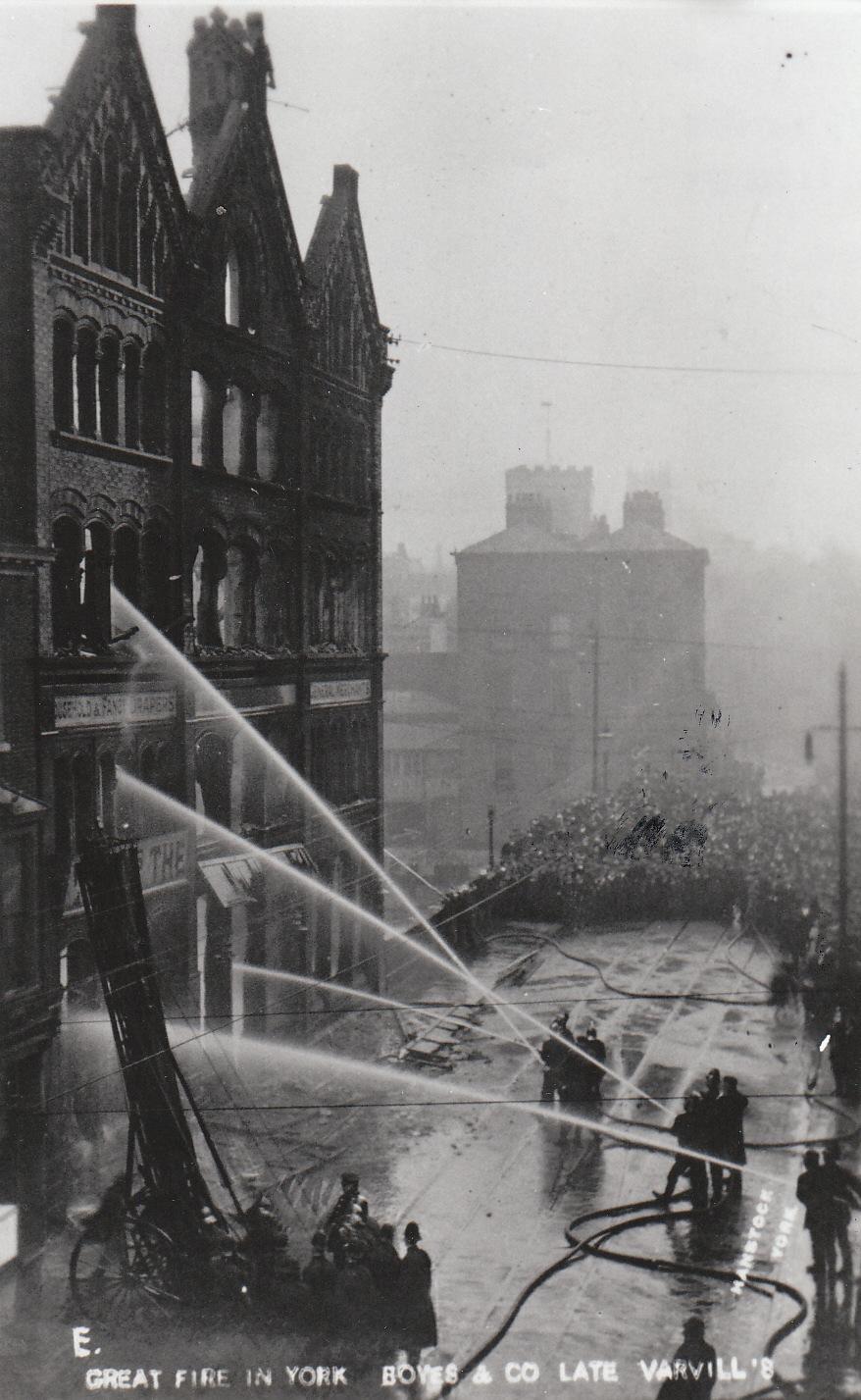NO history of Ouse Bridge in old photos would be complete without at least one showing the great fire which engulfed the Boyes department store in December 1910.
That was more than 100 years ago - yet the photographs are as vivid as if it happened yesterday. The ones on these pages were supplied to The Press a few years ago by reader Bryan Thornton. So thanks once again, Bryan. They are truly dramatic.
While it no longer exists at Ouse Bridge today, Boyes did rise from the ashes - it was rebuilt in 1912, and the 'new' Boyes can be seen in one of our later photographs, looking very different to the way it did before the 'great fire'.
All the rest of our photos today come from The Press' own archives. They show the bridge at various points in the last century, looking variously moody, busy and workaday - there's one showing the bridge from Queen's Staith, which is a reminder of how busy the wharves once were...
There's been a bridge on this site at least since Viking times, according the the York History website. That one was made of wood.
Whether it was the same bridge as the one which collapsed in 1154, we're not sure. The story goes that William Fitzherbert, reputedly a cousin of King Stephen, was returning to the city in triumph after being deposed and then reinstated as Archbishop of York. The bridge collapsed under the weight of his triumphal procession, yet almost miraculously no one was killed.
William's triumph was short-lived, sadly. He died on June 8, 1154, less than a month after returning to York, allegedly due to poison administered in the chalice at Mass. William got the last (posthumous) laugh, however - in 1227, he was canonised in Rome by Pope Honorius III. Today, St William's College is named after him.
The Ouse Bridge was rebuilt and has been through several incarnations since. It is also the holder of a singular honour: in 1367, according to the York History website, the first public toilets in Yorkshire - and possibly in the whole of England - were built on the bridge - along with a row of shops and houses.
It was perhaps partly the weight of these buildings which caused the bridge to collapse again in early 1565, when snow and flooding damaged its fabric. Twelve houses were destroyed - and, according to History of York, twelve people were killed after falling into the river.
A new bridge, with a prison known as a kidcote built underneath and a court above, was opened in 1566: the City Commissioners also met in rooms on the bridge.
This version of the bridge lasted for the best part of 250 years, but was demolished in 1810 to make way for the present Ouse Bridge, which was completed in 1812. To pay for its costs, a toll was imposed on anyone crossing. The toll charge was not dropped until 1829.
Sadly, there were no photographers around to capture any of these older versions of the bridge. So you'll have to make do with these more recent photos from our archive. Enjoy...
Stephen Lewis











Comments: Our rules
We want our comments to be a lively and valuable part of our community - a place where readers can debate and engage with the most important local issues. The ability to comment on our stories is a privilege, not a right, however, and that privilege may be withdrawn if it is abused or misused.
Please report any comments that break our rules.
Read the rules hereLast Updated:
Report this comment Cancel